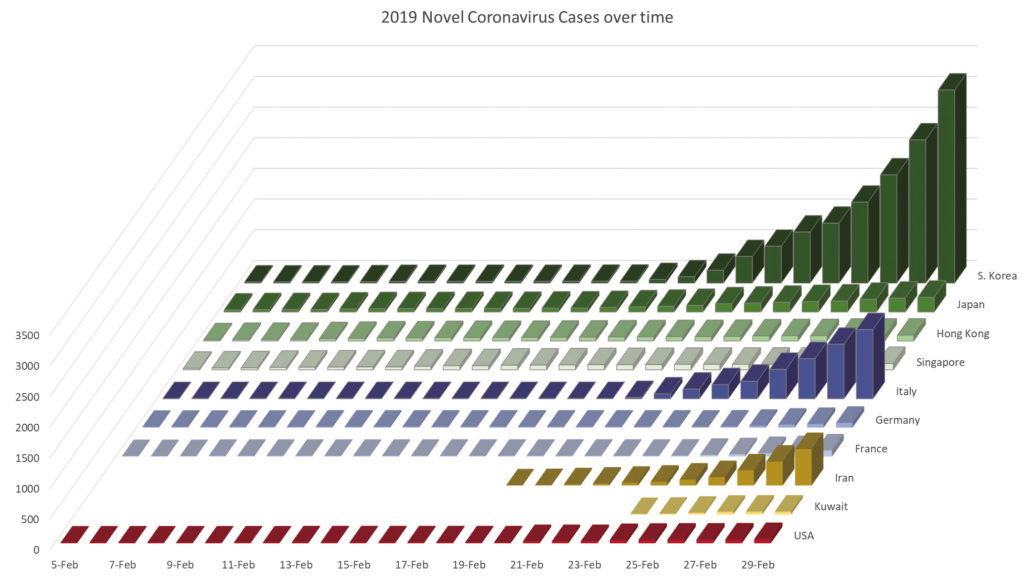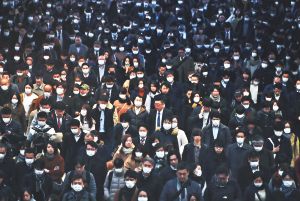The world has encountered a deadly virus called ‘Coronavirus’. The epicentre of Coronavirus was Wuhan city in China. On Jan. 30, WHO proposed calling the disease “2019-nCoV acute respiratory disease,” and the virus “2019-nCoV.”In a report published on Jan. 29, researchers in China referred to the disease as novel coronavirus (2019-nCoV)-infected pneumonia, or NCIP.
Coronaviruses are a large family of viruses that can cause respiratory illness such as the common cold, according to the center for disease control and prevention (CDC). Most people get infected with coronaviruses at some point in their lives but symptoms are typically mild to moderate. In some cases, the viruses can cause lower respiratory tract illnesses such as pneumonia and bronchitis. In terms of how one would catch the virus, the US Centre for Disease Control (CDC) says that human coronaviruses are most commonly spread between an infected person and others via:
• The air (from viral particles from a cough or sneeze).
• Close personal contact (touching or shaking hands).
• An object or surface with viral particles on it (then touching your mouth, nose or eyes before washing your hands), and
• Rarely from faecal contamination.
But the most interesting fact is that coronavirus rarely spreads from animal to human beings and what we see today in China is completely different. Thus, it is suspected that it is a “laboratory leak” of biological agent. 3,131 people have died so far from the coronavirus COVID-19 outbreak as of 3 March 2020, 92,235 are confirmed affected cases in 77 countries and territories. The fatality rate is still being assessed. Was this a laboratory leak for a test case of the bioweapon is a question of investigation as it is well known that the Wuhan Institute of Virology is a research institute administered by the Chinese Academy of Science on Virology, based in Jiangxia district, Wuhan, China and that prima facie suggests that such bioweapons have many marketing stakes involved and human fatalities have provided windfall in business to some.
Search for Vaccine
Virologists around the world are now tasked to understand this phenomena and find the appropriate vaccine to this growing concern. One of the postdoctoral fellow in virology at McMaster University in Ontario, Canada, Arinjay Banerjee, Phd, has extensively studied the coronaviruses and stated,”Based on analysis of multiple, very short regions of proteins in the novel coronavirus, the bioRxiv paper claimed that the new coronavirus may have acquired these regions from HIV.” Some types of viruses can swap pieces of their genetic code and in this case, the authors of the study say that the specific coronavirus which is involved in the most recent outbreak (2019-nCoV) has four small chunks of sequence in its genetic code which are not found in other, similar coronaviruses like SARS. According to the authors, these pieces bear some resemblance to bits of sequence also found in HIV. However, the authors then speculated that this might not be a coincidence and perhaps the bits of genetic code were put there intentionally. This statement has reflected to a new controversy of the epidemic as this suggest that the coronavirus may have been laboratory made as a bioweapon but somehow got leaked and affected the people in the Wuhan region of China.
Several biotech companies are working on vaccines. Their stocks have risen on hope that they will find a remedy, though analysts doubt that they can produce a product to stop the current outbreak. Until a vaccine is produced, doctors in China are using other antiviral medicines and traditional Chinese medicines to treat the virus. Among the items that are in high demand are face masks. Hospitals and pharmacies have been running out of masks during the outbreak. Stocks of some Japanese medical supply companies that make masks and protective clothing used in hospitals, like Kawamoto and Azearth, have surged reacting to the demand. This has led to conspiracy theories being hatched by medical companies.
China is now pumping money into the market understanding the market depression caused by coronavirus. The People’s Bank of China said, “it would inject $1.2 trillion yuan ($173 billion) into the Chinese markets using the purchase of short-term bonds to shore up banks’ ability to lend money. The measure will help maintain “reasonably ample liquidity” in the banking system and keep currency markets stable.” This step is taken in lieu of the fact when china’s currency also fell. The onshore yuan sank 1.5%, dropping below seven yuan to one US dollar.
Origin of the Virus
Since the virus first popped up in Wuhan in people who had visited a local seafood and animal market (called the Huanan seafood market), officials could only say it likely hopped from an animal to humans. In a new study, however, the researchers compared the 2019-nCoV genetic sequence with those in a library of viral sequences, and found that the most closely related viruses were two coronaviruses that originated in bats; both of those coronaviruses shared 88% of their genetic sequence with that of 2019-nCoV. It is also speculated that snakes, which were sold at the Huanan seafood market, as a possible source of 2019-nCoV. However, some experts state it’s unclear if coronaviruses can infect snakes.


Whatever the case maybe, whether coronavirus is from bats or snakes or laboratory made, it has to be contained as it has taken a global death toll, though majorly in China and many countries have issued travel advisories to people and also called back their citizens from China. Coronavirus has been declared as a global health emergency as the threat rises outside China. A vaccine against the new Chinese coronavirus could be ready to be tested in people as soon as April, but it will still have a long way to go before being widely available. The candidate vaccine will likely be based on a new technology that has been tested on animals and gone through early-stage trials in humans, but has yet to receive regulatory approval against any disease.













